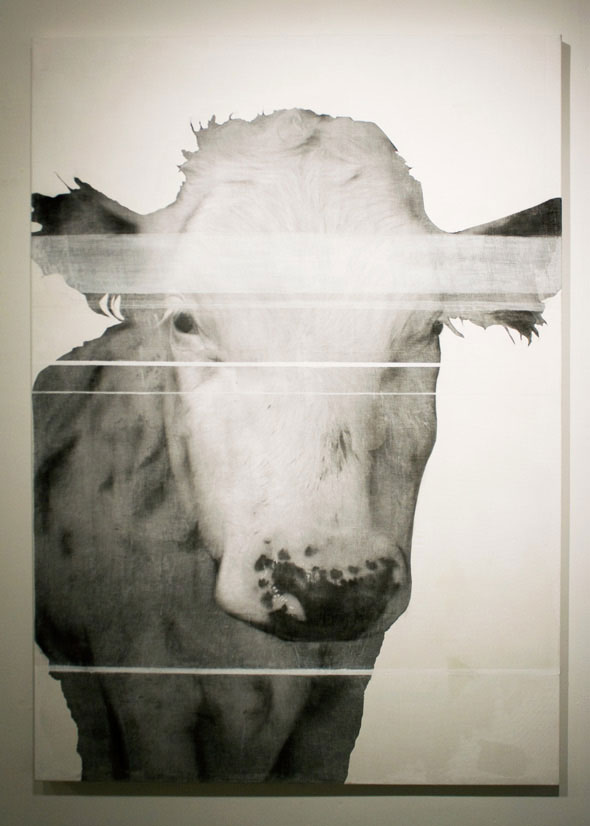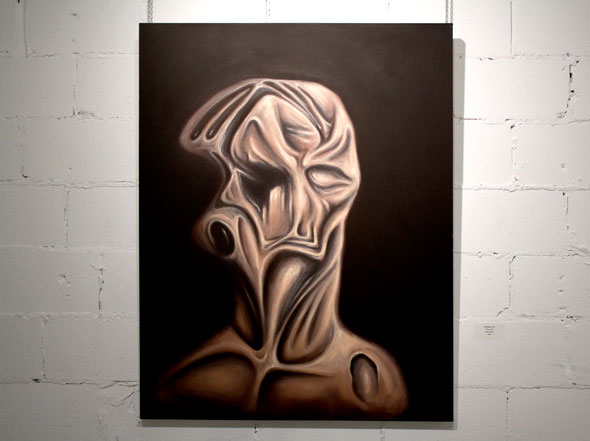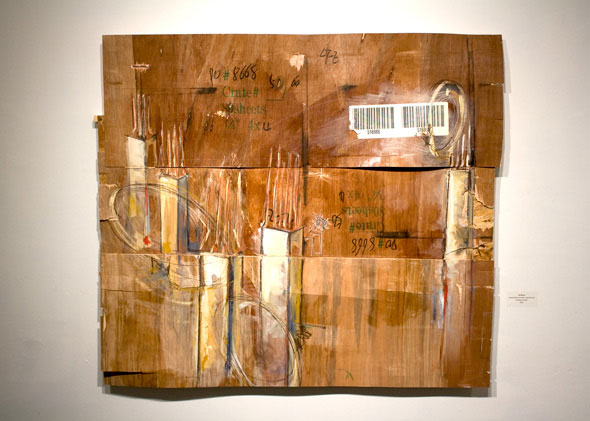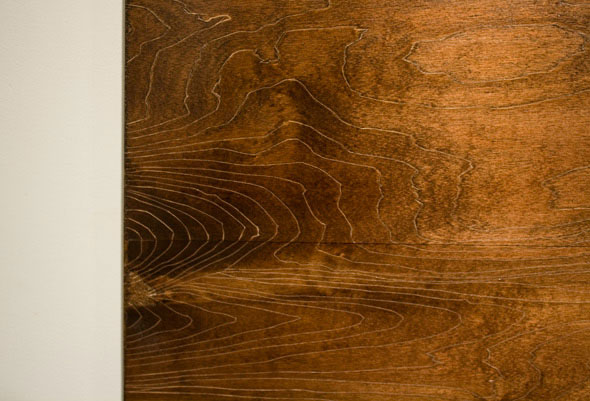
Under the Hammer at Whippersnapper
My friend with a friend in this new show at Whippersnapper brought me to see the goods from these four young artists on a busy Saturday night on College. With a semi-desaturated, environmental aesthetic lining all four bodies of work, it was fitting that the show was opening in this most Spring-like week of Spring so far. Tree bark growing on chair legs, warped human forms, and bleeding wood panels notified me all-the-more that nature is coming to life right before my very eyes.

Rachel Wunder's minimal photo/collages, which was the first series I saw upon entering the second-floor space, depict stoic, branded cows that seem to have already acknowledged their futures. The works are lightly, but noticeably, processed with think applications of translucent waxes and thin coats of white paint. Looking straight at me, the fenced-in cattle seem to be stuck in a ghostly limbo farm somewhere between a cheese factory and an Angus burger.
Adam Meyer's paintings are surreal representations of the human body, all warped as if the figures were either made of putty handled by a curious toddler, or sufficiently deformed with the Photoshop Smudge Tool. Though the images initially horrified me ('The Hundred Days of the Dragon,' anyone?), they have a certain charm and character that is both elegant and sad, not unlike Wunder's doomed herd. Only one of these paintings depicts a face (or so it seems...), so I was able to look at most of Meyer's work and interpret the forms to my own deprived tastes. When they aren't looking like goblins, the forms have the familiar qualities of figure drawings and traditional landscapes.

Christina Vanelli makes use of recycled cardboard, wood, and wire in her work, which came off to me as architectural blueprints of packing material. Long, prism-like forms that may very well be skyscrapers appear awkwardly on a collapsed crate, which evokes ideas of space, the intrusion of an urban environment, and concepts of scale. I thought that Vanelli was doing the most experimentation of anyone in the exhibition, which made some works looks sloppy, but others playful and intuitively solid.

Last in the roundabout were Danielle Owen's relatively large panels which utilized all manner of wood, clearly her material of choice. Owen stacks, penetrates, juxtaposes, and carves into all manners of manufactured and natural wood. The rigid edges and corners of a slab of wood may be naked and stripped of the protection of bark, but the grains and rings of the material are highlighted and celebrated in these large, patterned works. Confronted with a panel that showed what I could only conclude to be menstruating particle board, her portrayal of archetypal patterns and shapes in nature, no matter how processed, is dainty and refined.

Writing and photography by Blake Williams
Latest Videos
Latest Videos
Join the conversation Load comments







